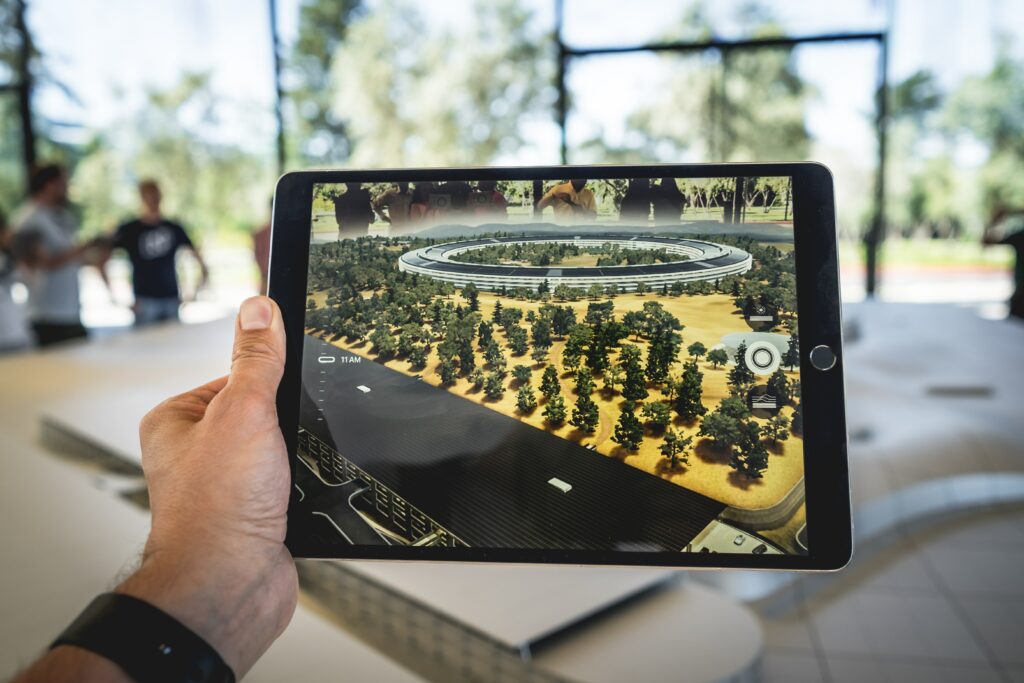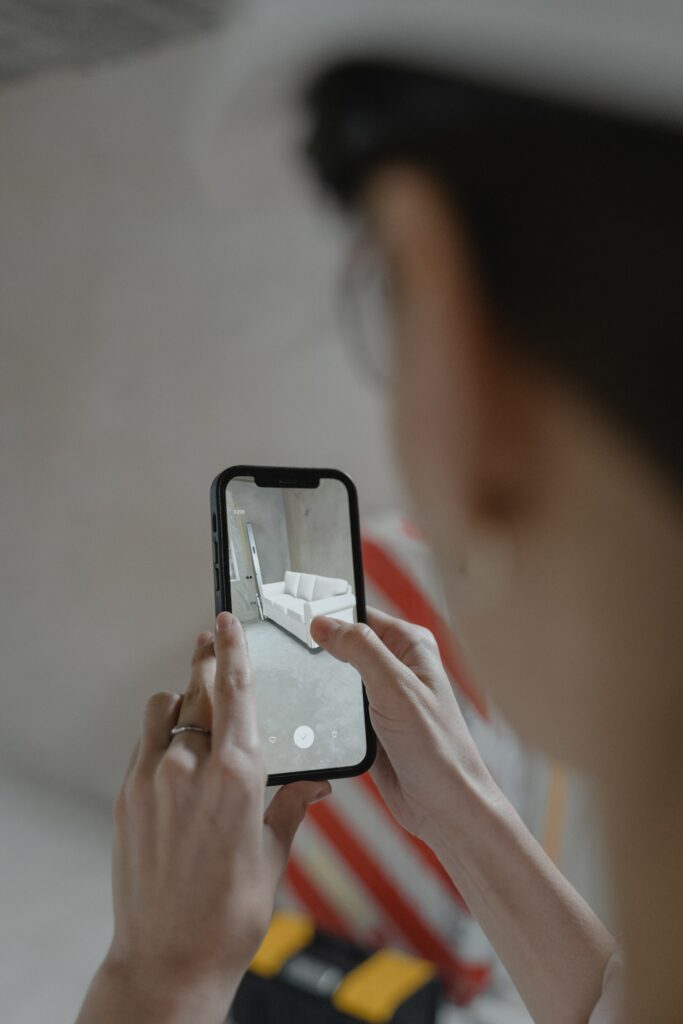
Efficiency is an important business aspect because it helps businesses maximize their outputs from their available resources and thus minimize cost and increase competitiveness. The new trend businesses are using to maximize efficiency is Augmented Reality.
Businesses are using advanced technology to improve marketing and sales strategies. The eCommerce platform is today used more by customers and businesses who are competing to make their e-stores appealing, adequate, and interactive. In this article, we discuss how AR can help make e-businesses more efficient.
What is augmented reality in eCommerce?
The eCommerce environment is the new platform where customers visit e-stores, compare products, and shop. E-businesses build an eCommerce site and display their products or services in an e-store where customers can visit online and shop, ask questions, or make orders, and pay securely.

Traditionally, customers visit physical brick and motor stores for shopping. They walk through the streets to choose the most appealing store and enter to check what products they have. The word appealing is important in physical business premises and continues to be important even in eCommerce. It is how the products are arranged, the way the store is painted, designed, service, prices, etc.
If you take the word appealing and bring it into the e-store, that is where AR comes in. It is a technology that helps the eCommerce industry to add layers of virtual images to their e-stores to make them appealing.
It helps the customers to interact with the e-store as though the customer was in a real street/world. AR combines real and virtual objects so that customers feel like they are in a real store. Using AR, e-businesses can train, teach, and sometimes entertain customers in their e-shopping journey.
How can augmented reality help improve eCommerce performance?

It is important to note that AR is different from VR because VR brings users into a virtual world but AR connects them to a real world through virtual images superimposed on real things using interactive 3D technology presentation.
The primary components of AR are computers, displays, tracking, and input devices which are assembled depending on the application used and the expected use. These four components combined produce interactive visuals that improve performance and efficiency in various ways.
Enhanced customer service
AR technology is used to walk the customer within a store on their screen. As the customer walks, they can see different products the e-business has and how they work. For example, AR in the tourism field is used to guide tourists around zoos, historic sites, botanical gardens, etc. where they can watch details associated with the site using their phones or computer. A customer gets a better experience with the site and thus appreciates the service.
Pre-purchase testing of products
A major reason why customers return products they purchased online is because they realized the product cannot serve the perceived service they thought it could offer during purchase. As a result, they return the product which impacts the business profitability.
AR helps eliminate or minimize the rate of returned products by letting the customer interact with the product before they buy. Using their phone, a customer visualizes the product in the store such that by the time they add it to their order, they are almost certain it will serve the intended purpose.
Improves customer experience and conversion rate
Customers are looking for eCommerce sites that can provide an experience just as if the customer was in a physical store. They want to explore the store and see what’s on each floor, shelf, department, etc.
Online products listings do not provide such an experience because a customer scrolls though one product at a time. In AR-enabled e-business, a customer can see all products as they are displayed. If they take an interest in one product, they zoom it for further interaction. Compared to an online list of products, an AR store can have a higher conversion rate.
More engaging social media marketing campaigns
AR used in social media marketing provides users with real product interactions and experiences. Such a post can be shared, forwarded, reposted, and watched more compared to other ads and increase conversion rate.
Benefits of AR for improving the efficiency of eCommerce
AR helps businesses present products in 3D so that customers view them as though they were real. This way of presenting products gives e-businesses various advantages.
Better profits
The fact that a customer can interact with a product is an added advantage to the business. For example, a customer visits an online store intending to buy a beauty product such as eye shadow or lipstick. If the product is new, the customer would like to know how they will look in that product. AR will help them visualize the product and the likelihood of them buying it is high. To the e-business, it means more profit with every product bought.
Less returned products

One of the greatest challenges retailers are dealing with today is returned products. They have to pay for shipping, go through another packaging cost, sourcing, etc. with AR technology, a customer is almost certain about the product they order and this reduces issues of returned products.
Customer retention
Businesses benefit when a customer buys a product once but they benefit more when the same customer returns to buy more many times later. Mostly, they don’t return alone but they refer more customers to the e-business. This is one big benefit AR is helping e-businesses to enjoy.
Educating customers
In a physical store, a customer requests to be educated before they make a purchase decision. That means someone in customer service will sit with them and train them on how to use the product, its benefits, and why they should buy it. AR is making this easier by educating customers about various products through 3D images and objects.
Saving on cost
The initial installation of an AR technology system cost can be high but the rate of return, in the long run, keeps growing. Instead of employing a long list of customer service personnel to handle customer experience, AR provides one platform that provides most queries a customer might have.
How to integrate AR into your business
In an eCommerce environment, AR integrates the real world with virtual components to provide a composite view to shoppers. The technology can also be programmed to add video add-ons that can be viewed on tablets and smartphones setting new possibilities in the eCommerce world. AR can be integrated into the eCommerce environment in different ways. However, the business must first identify its objectives, the AR tools that best fit it, and create its marketing strategies.
User manuals
Most products, especially electronics, have user manuals that help users learn to use them efficiently. Text manuals are proving difficult to use because they are long texts that are hard to follow. Thankfully, AR technology is proving useful in providing user interactive digital manuals that users can easily follow and use.
Preview item placement

Before a customer purchases a product online, they want to be certain it will serve the intended purpose. For example, a customer could be buying a kitchen cabinet but they are not sure if it will fit into their kitchen space. To avoid returning the product, a customer previews the product on their phone to determine if it will fit.
Social media marketing campaigns
Social media is important today when marketing products to a bigger audience. Users tweak conversations by adding videos, effects, texts, etc. to their post stories. AR is using social media filters to make products more engaging, increase brand awareness, and make products stand out.
Trying on a product virtually
E-businesses need to help customers to be certain of the products they are ordering before they click to buy. The customer needs to be certain about color, size, make, features, etc. The virtual try-on features provided by AR are making this a reality and thus reducing the rate of returned items.
Other ways to incorporate AR in eCommerce are through interactive staff training, remote team collaboration, explaining product features, demos, and shipping.
What products benefit from AR
The greatest beneficiaries of AR currently are the beauty product companies, pharmaceutical businesses, electronics field, retail stores, furniture/ household showrooms, paint products, automotive companies, building/ construction, and engineering.
Conclusion
AR is still new but it’s already impacting greatly and changing the eCommerce business environment. Clients want to interact with products, try them out, and read their user manuals interactively. This is a solution AR has proved to provide through combining the real world with the virtual world. Due to the benefits this technology has proved to bring into e-businesses, most companies are already adopting it in a big way.







